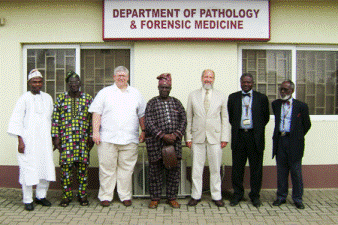Natural Resources, School of

Karl Reinhard Publications
Document Type
Article
Date of this Version
2017
Citation
2017. Journal of Arachnology 45:370–375
Abstract
Fragmented remains of pseudoscorpions belonging to the family Cheiridiidae (Arachnida, Pseudoscorpiones) were recovered from Ychsma polity (c. AD 1000–1475) burial sediments from Pachacamac, Peru. Sediments from 21 burials were examined following rehydration in 0.5% trisodium phosphate for 48 h and subsequent screening through a 250 lm mesh. Materials larger than 250 lm were surveyed for the presence of arthropods. A total of two samples contained pseudoscorpion fragments, which were collected and quantified to determine the minimal number of pseudoscorpions present per gram of each sample. Following quantification, pseudoscorpion specimens were imaged utilizing confocal laser scanning microscopy (CLSM) to assist with identification efforts. Specimens have morphological characteristics consistent with those found in members of the pseudoscorpion family Cheiridiidae. Members of this family have not been previously described from archaeological materials recovered from Peru, and the implications of pseudoscorpions as members of the archaeological corpocenosis have not been fully interpreted. Herein, we report the first recovery of pseudoscorpions from archaeological materials at Pachacamac, and discuss the significance of their roles in the archaeological corpocenosis.
Included in
Archaeological Anthropology Commons, Ecology and Evolutionary Biology Commons, Environmental Public Health Commons, Other Public Health Commons, Parasitology Commons


Comments
Copyright by the authors. Published by American Arachnological Society. Used by permission.